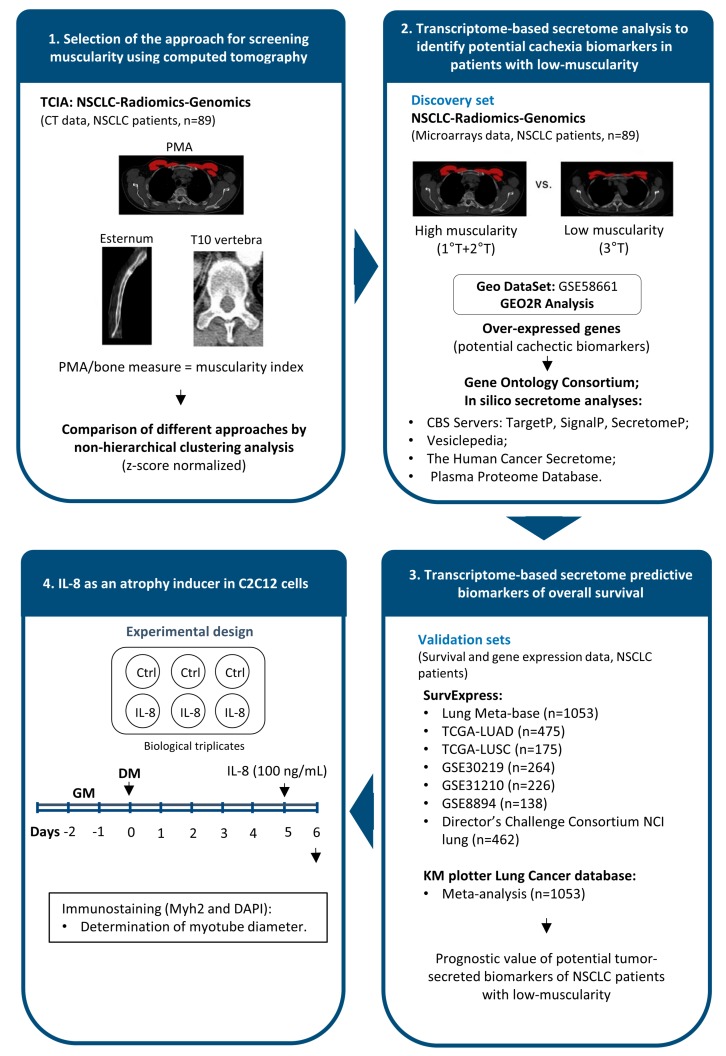Figure 1.
The workflow of the integrative analyses of computed tomography (CT) images and tumor transcriptome data to identify secreted cachexia biomarkers in non-small cell lung cancer (NSCLC) patients with low-muscularity. (1) We selected CTs from 89 patients with NSCLC from “NSCLC-Radiomics-Genomics” collection [28]. A total of 12 CTs features, including pectoralis muscle area (PMA), manubrium, and sternum body lengths, six T10 (tenth thoracic) different measures, and an anteroposterior length were used to determine an approach for screening muscularity. (2) This analysis revealed that PMA allows the identification of NSCLC patients with low- (third tercile, 3rd T) and high-muscularity (first and second terciles, 1st T + 2nd T). These groups were compared by using a tumor transcriptomic-based secretome analysis (discovery set; microarray data; GSE58661) to identify potential cachexia biomarkers (over-expressed genes) in patients with low-muscularity. Transcripts with increased expression were further analyzed to identify enriched terms by Gene Ontology Consortium and to predict potentially secreted proteins using secretome and microvesicle databases. (3) The performance of these transcripts as tumor biomarkers able to determine patients’ survival outcome was validated in multiple independent lung cancer validation sets. (4) C2C12 myoblasts differentiated into myotubes were used to evaluate the ability of the selected biomarker (IL-8 (interleukin-8)) in inducing atrophy. C2C12 mouse myoblasts were cultured in a growth medium (GM) for two days. Myoblasts with 80% to 90% of confluence were induced to differentiate in a differentiation medium (DM) for five days when the cells were treated with recombinant IL-8 (100 ng/mL for 24 h). TCIA: The Cancer Imaging Archive; TCGA: The Cancer Genome Atlas; LUAD: lung adenocarcinoma; LUSC: lung squamous cell carcinoma; GSE: Gene Expression Omnibus accession numbers; NCI: National Cancer Institute; KM: Kaplan Meier; n: number of patients; Ctrl: Control; Myh2: myosin heavy chain 2; DAPI: 4′,6-Diamidine-2′-phenylindole dihydrochloride nuclear staining.

